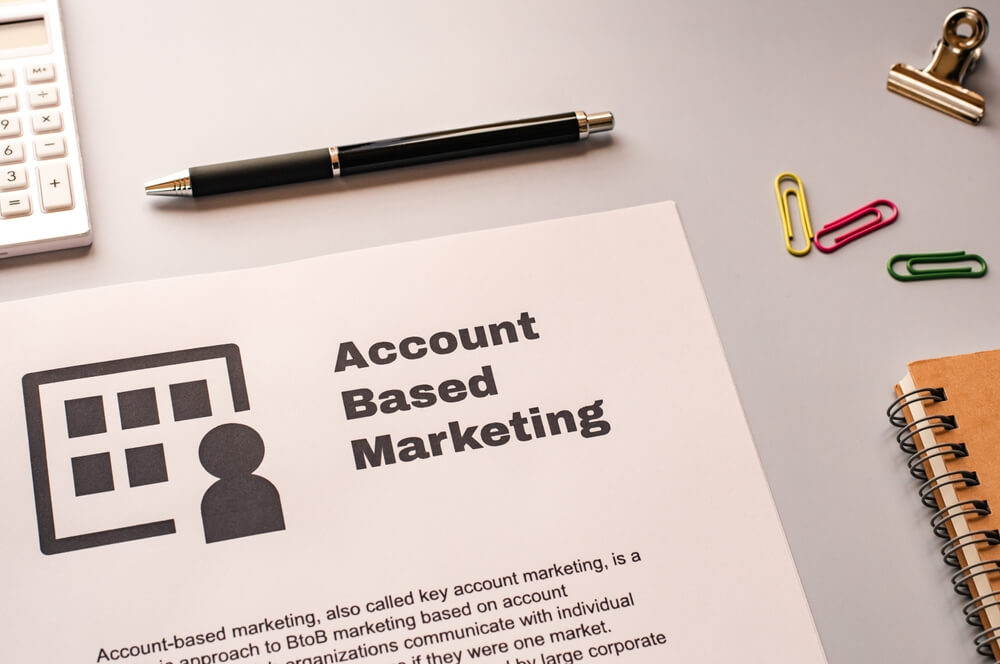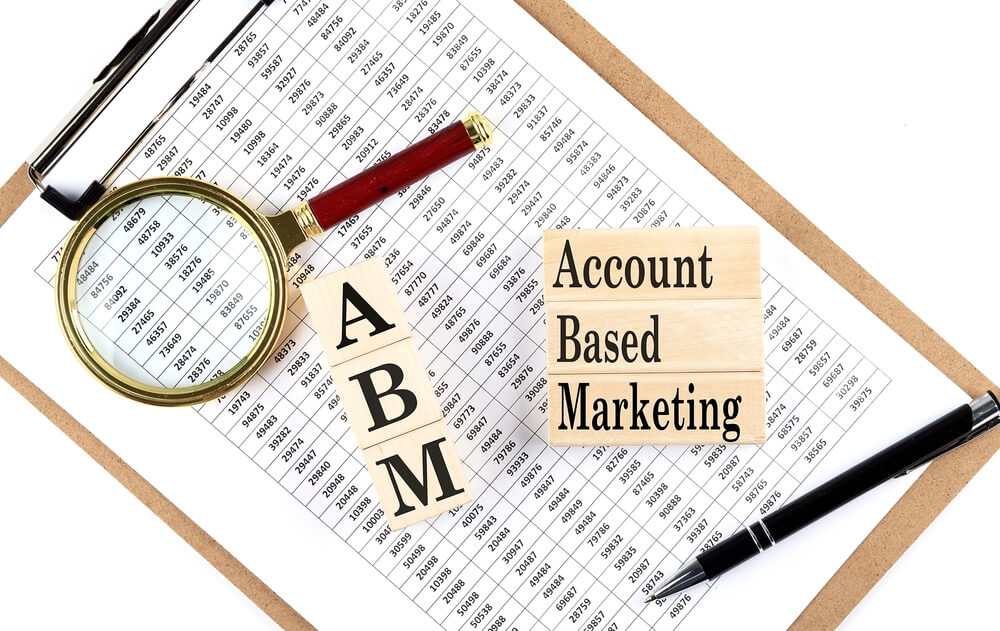
How B2B Email Marketing Campaigns Can Help ABM Strategies
Account-based marketing (ABM) is a focused business-to-business (B2B) strategy that targets key accounts with customized campaigns. Within this framework, B2B email marketing emerges as a potent tool, linking decision-makers to personalized content.
This article explores how B2B email marketing campaigns can effectively integrate into ABM strategies to drive tangible results. It covers the following:
- Synergizing ABM and email marketing.
- Customizing email content.
- Personalizing emails with data.
- Collaborating with sales for insights.
- Tailoring campaigns for different buyer stages.
- Automating scaling efforts.
There is a lot to discuss, so get ready to take notes. Let’s go!
Tired of investing in Search Engine Optimization without getting any results? See how Digital Authority Partners turns that around!
The Convergence of ABM and Email Marketing
ABM is a potent tool for overcoming some of the biggest hurdles in B2B demand generation. It targets critical accounts for business growth and creates tailored marketing experiences aimed at decision-makers within these accounts. Email marketing is integral to this strategy because it enables direct, personalized communication with these stakeholders.
In ABM, email marketing serves several purposes:
- Direct and Personalized Contact. It provides immediate and tailored communication channels with individuals in key accounts.
- Scalable and Efficient. Email marketing offers scalability, efficiently reaching multiple key accounts.
- Rich Data Insights. Interaction data from emails yields insights into account preferences and behaviors. This knowledge is then used to refine the ABM approach.
Fusing ABM and B2B email marketing requires precision. Its foundation lies in data-informed communications that build meaningful relationships with key accounts. This integration is key to enhancing ABM's effectiveness and achieving strategic goals.
Ways B2B Email Marketing Supports ABM Strategies

As discussed, email marketing is critical to a successful ABM campaign. Let us discuss how.
1. Tailoring Email Content for Key Accounts
The focus in ABM is on nurturing and converting specific accounts. Thus, the role of customized email content cannot be understated.
Effective email content is crucial, considering that 14.3% of all emails go missing or get caught by popular spam filters. Emails must reach their intended recipient, capture their attention, and address their needs.
When developing customized email campaigns for key accounts, consider these strategies:
- Understand the Account's Needs. Deeply research each account to understand their unique challenges, needs, and business goals. This knowledge guides the creation of highly relevant and engaging content.
- Craft Tailored Messages. Develop email messages that speak directly to the distinct persona of each account. Reference pain points, industry trends, or successes relevant to them.
- Ensure Relevance and Engagement. Make sure that the content is not only relevant but also engaging. Utilize a tone and language that resonate with the target audience. The brand voice must also reflect an understanding of the accounts’ business environment.
- Avoid Spam Triggers. Given the high rate of emails getting caught in spam filters, crafting emails that avoid common spam triggers is vital. This process includes carefully selecting words, ensuring proper email formatting, and guaranteeing a good sender reputation.
Making sure that your tailored emails reach your audience makes your ABM strategy more engaging. This leads to better outcomes in your B2B marketing efforts.
2. Leveraging Data for Personalization
In the era of data-driven marketing, the role of data in ABM, especially in personalizing email content, is indispensable. Understanding the behavior and preferences of individuals within key accounts is crucial for crafting personalized email messages.
Here is how data can enhance email personalization in ABM:
- Behavioral Insights. Analyze data on how contacts in critical accounts interact with your emails and website. This information can reveal their interests and preferences, allowing you to tailor your content as needed.
- Segmentation. Use data to segment the stakeholders within each key account based on their role, engagement level, or interests. This segmentation helps in creating more targeted and relevant email content.
- Tailored Offers. Use data to understand the needs of each segment. Create personalized offers or content that directly addresses those needs, increasing the likelihood of a positive response.
- Testing and Refinement. Continuously test different aspects of your email campaigns, from subject lines to content styles. Use the data from these tests to refine and optimize your approach for better engagement and results.
For example, a software company targets multiple key businesses using ABM. They extract data from these businesses' website visits and previous emails to understand what software features in which they are interested. Then, they send personalized emails to each company focusing on those specific features, making their email marketing more effective and personal.
3. Coordinating with Sales for Account Insights
In any ABM strategy, aligning sales and marketing teams is crucial for a cohesive customer experience. This is particularly important in B2B email marketing as both teams collaborate to understand and address the needs of key accounts.
The next section explores how aligning sales and marketing can enhance ABM email efforts:
- Shared Insights. Sales teams often have direct interactions and deep insights into the needs and challenges of key accounts. Sharing these insights with the marketing team informs more relevant and impactful email content.
- Unified Messaging. Ensuring that both sales and marketing are on the same page about messaging creates consistency. This unified approach reinforces the message across all customer touchpoints, enhancing its impact.
- Feedback Loop. Sales feedback on customer responses to email campaigns is invaluable. This information is used to tailor future email strategies, making them resonate better with the target audience.
- Targeted Engagement. Combining the knowledge of sales teams and the strategic minds of marketing professionals gives way to emails that engage key decision-makers. Such emails address their specific pain points and push them along the sales funnel.
In essence, the collaboration between sales and marketing in an ABM approach is essential. It ensures that email campaigns are well-informed and targeted. Moreover, it contributes to a seamless and cohesive customer journey.
4. Creating Targeted Campaigns for Each Stage of the Buyer’s Journey
In ABM, email campaigns must cater to different stages of the buyer's journey. Les Matthews of MasterCard states personalization has become a "make-or-break" way to enhance customer experience. This is particularly relevant in B2B email marketing, where personalized content is influential.
- Awareness Stage. At this stage, your emails should focus on introducing your brand and solutions. Use content that educates and informs about your industry, addressing the broader challenges that your target account faces.
- Consideration Stage. Here, the emails need to delve deeper into how your solutions can address specific problems or needs of the target account. Case studies, product demos, and detailed solution guides are practical at this stage.
- Decision-Making Stage. For prospects in this stage, your emails should be highly personalized and focused on closing the sale. Tailored proposals, special offers, and direct CTAs can be effective.
- Post-Purchase Stage. Even after a sale, continue engaging account stakeholders with personalized content that enhances their experience. These might include tips on getting the most out of your product or service and information on updates or new features.
Take, for example, a software company implementing ABM to target a key account with a series of emails. Initially, they send educational content introducing new tech trends, creating awareness.
As interest grows, they follow up with case studies showcasing solutions, addressing the consideration stage. Finally, they offer a tailored demo and discount, effectively nudging stakeholders toward the decision-making stage.
5. Automating and Scaling ABM Email Efforts
As AI changes marketing strategies, it plays a pivotal role in automating and scaling ABM email campaigns. Combined with ABM, automation allows marketers to keep a high degree of personalization while managing a larger volume of accounts efficiently.
- Efficient Personalization. AI-powered automation tools can analyze data and segment key accounts. They aid in creating personalized email content that resonates with each segment. This capability enables the maintenance of personalization at scale.
- Timely Follow-ups. Automated email workflows ensure timely follow-ups with prospects at different stages of the buyer's journey. AI helps determine the optimal timing for sending these emails to maximize engagement.
- Consistent Engagement Across Accounts. Automation ensures a consistent level of engagement across all key accounts. Even as the number of accounts grows, each one is guaranteed to receive a tailored experience.
- Balanced Automation and Human Touch. While automation handles repetitive tasks and data analysis, the human element remains crucial. Personal touches, such as follow-up calls, should complement automated emails. This way, you maintain the personal connection that is central to ABM.
Summing Up
Email marketing plays a crucial role in strengthening ABM strategies. It allows B2B marketers to personalize interactions, enhancing the overall customer experience. As emerging technologies reshape marketing, the synergy between ABM and email marketing is bound to be more impactful.
For B2B marketers looking to use this powerful combination, consider working with Digital Authority Partners (DAP). Contact us today for expert guidance and to maximize your ABM efforts.
Want To Meet Our Expert Team?
Book a meeting directly here




